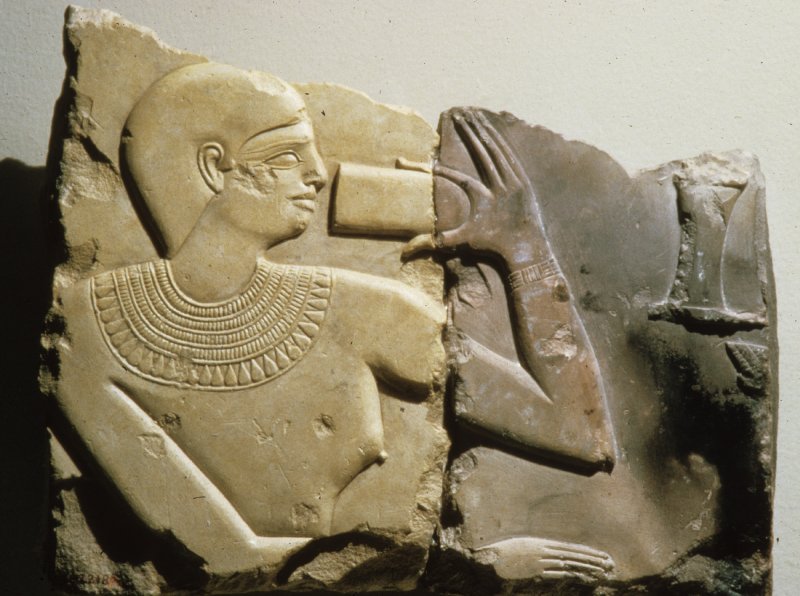Mentuhotep II – The 11th Dynasty’s Pharaoh Who Reunited Egypt And Established The Middle Kingdom
A. Sutherland - AncientPages.com - Mentuhotep II of the 11th Dynasty is considered one of the most significant figures in ancient Egypt, closely associated with the South of Egypt and later viewed as the second (after Menes) founder of the Egyptian State. The 11th Dynasty was preceded by a stormy period after the end of the 6th Dynasty.
Fragments from stela of the Chief Steward Henenu. Circa 2030 –2000 BC. Middle Kingdom - 11th Dynasty. Reign of Mentuhotep II, late. Source
Finally, the 11th Dynasty was able to consolidate its territory as the land south of the area of Abydos, and this period is significant in the history of ancient Egypt.
According to the incomplete Royal Canon of Turin, an ancient Egyptian papyrus probably dated to Pharaoh Ramesses II's reign, Mentuhotep II (also called (Nebhapetre) ) reigned for fifty-one years. He contributed to the unification of Upper and Lower Egypt, which probably happened shortly before year 39 of his reign.
But before it happened, Mentuhotep II's goal was to secure the country internally, and in the beginning, it was not an easy task. His power extended from the first cataract to the 10th of Upper Egypt when he ascended the throne. It was, however, limited from the north by the lands ruled by the princes of Asyut.
After the Herakleopolis kings violated the sacred ancient royal necropolis of Abydos in Upper Egypt in the fourteenth year of Mentuhotep's reign, the Pharaoh sent his armies to conquer Lower Egypt. He passed without a fight through 15 nomes and captured Asyut, which caused the fall of Herakleopolis.
The first transitional period ended. In regnal year 39, Mentuhotep II changed his titulary to Shematawy, meaning "He who unifies the two lands." Now, he controlled Abydos, Asyut, and Heracleopolis, and his action led to uniting of Egypt.
Mentuhotep's political unification was celebrated even by his contemporaries. Various scriptures were found, dated up to the 20th Dynasty. The Pharaoh extended his influence beyond its borders, especially southwards, into the region of Nubia. He was also involved in excessive building projects (temples and shrines) within the country.
Relief showing Mentuhotep II in front of Montu from his mortuary temple in Deir el Bahri, Londres. British Museum, EA 1397. Juan R. Lazaro - source
Some survived, including the impressive mortuary temple complex he ordered to build at Deir el-Bahari in Western Thebes.
Also, various forms of art that flourished during his reign confirmed the excellent time for Egypt when Mentuhotep II successfully restored the peace.
However, after Mentuhotep II's death, the Dynasty ended.
Archaeological excavation revealed evidence of the holy war that was crucial for the unification of Egypt. The findings included bodies wrapped in linen (with the name of King Mentuhotep written on them). Approximately sixty soldiers were buried in the famous soldiers' cemetery in the Deir el-Bahari area in Luxor in the 1920s.
Laid together in the "Tomb of the Warriors," without embalming, their bodies were unearthed well-preserved by dehydration.
The bodies from the "Tomb of the Warriors" - buried within sight of the royal burial place of Mentuhotep II are considered the best-preserved human remains found and dated to the Middle Kingdom. It can only mean that these men died in a crucial battle and were honored as heroes. It is even possible they fought in the decisive battle against Heracleopolis.
Left: Statue, a statue of the king, Mentuhotep, Nebhepetre. Source: Right: Statue, standing king, Mentuhotep, Nebhepetre. source
As for the ruler of Heracleopolis, Merykara, he "died before Mentuhotep II reached his capital. It is believed that Lower Egypt's resistance collapsed with the death of their Pharaoh…" 1
Thutmose III's King List, Inscription At Shatt el-Rigal
Among the 11th Dynasty rulers in Pharaoh Thutmose III's king list found in the Karnak Temple appeared "the Ancestor" – Mentuhotep I, a significant figure of the late 11th Dynasty, with both his Horus and birth names.
He was most likely considered the founder of this Dynasty and given the pharaonic title after his death. However, his throne name has never been confirmed, and there is no archeological evidence he ruled as king.
Mentuhotep II's parentage is better known from a rock inscription at Shatt el-Rigal. The monarch is associated with the King's Mother Iah and the "God's Father, the Son of Ra, Inyotef." According to the stela of Henun in Cairo (unfortunately badly broken) can still inform that Mentuhotep II was indeed a son of Inyotef ("son of Ka").
Mentuhotep had more than two wives. One of them was Neferu (also his sister), whose name is on her tomb inscriptions. There was also another important woman in his life, and it was Tem, titled "Mother of the Dual King," probably because she was the mother of Mentuhotep III. Other royal women – King's Wives, all Prophetesses of the goddess Hathor - associated with this great Pharaoh were buried in the Deir el-Bahari temple.
Additionally, one more burial belonged to a child, Mayet, whose status remains unknown.
It is worth mentioning that during the reign of Mentuhotep II, the cult of Hathor Lady of Dendereh became widespread. On one occasion, king Mentuhotep II even called himself her son instead of "Son of Ra" in his royal titles. Many of the court ladies entombed around the Pharaoh's pyramid were members of Hathor's priesthood.
After he died in c. 1998 BC, Mentuhotep II was probably buried in a bay in the cliffs near his father's great monument at Deir el Bahari.
"Little remains there except for a causeway that ends at a sloping passage going into the rock. Hieratic graffiti scratched on the rocks in the area by priests of the mortuary cult at least indicates that the king found his resting place somewhere close by." 2
The great Pharaoh left a united, well-organized, and prosperous state to his second son and successor, Mentuhotep III.
Written by – A. Sutherland - AncientPages.com Senior Staff Writer
Updated on August 16, 2022
Copyright © AncientPages.com All rights reserved. This material may not be published, broadcast, rewritten or redistributed in whole or part without the express written permission of AncientPages.com
Expand for referencesReferences:
Captivating History
Clayton P. A., Chronicles of the Pharaohs
H.E. Winlock, The Theban Necropolis In The Middle Kingdom, The American Journal of Semitic Languages and literature
Marochetti E. F., The Reliefs of the Chapel of Nebhepetra Mentuhotep at Gebelein
Dodson A, Hilton D. The Complete Royal Families of Ancient Egypt
More From Ancient Pages
-
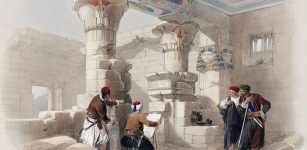 Egyptian Artisans In The Valley Of The Kings Had Permanent Jobs In The Time Of The Pharaohs
Featured Stories | Apr 11, 2022
Egyptian Artisans In The Valley Of The Kings Had Permanent Jobs In The Time Of The Pharaohs
Featured Stories | Apr 11, 2022 -
 Cave Hidden Under Pembroke Castle in Wales Could Hold Secrets Dating Back 10,000 Years
Archaeology | Jul 16, 2022
Cave Hidden Under Pembroke Castle in Wales Could Hold Secrets Dating Back 10,000 Years
Archaeology | Jul 16, 2022 -
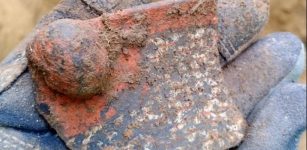 6,000-Year-Old Discovery Of Artifacts Associated With Ancient Lengyel Culture
Archaeology | Mar 27, 2020
6,000-Year-Old Discovery Of Artifacts Associated With Ancient Lengyel Culture
Archaeology | Mar 27, 2020 -
 World’s Oldest Recorded Solar Eclipse Re-Writes History Of Egyptian Pharaohs
Archaeology | Oct 30, 2017
World’s Oldest Recorded Solar Eclipse Re-Writes History Of Egyptian Pharaohs
Archaeology | Oct 30, 2017 -
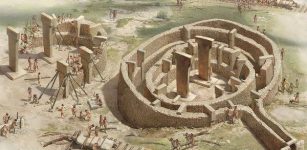 Mysterious Skull Cult At Göbekli Tepe – Ancestor Worship Or Trophies Of Dead Enemies?
Archaeology | Jul 25, 2017
Mysterious Skull Cult At Göbekli Tepe – Ancestor Worship Or Trophies Of Dead Enemies?
Archaeology | Jul 25, 2017 -
 Mnemosyne: Powerful Greek Goddess Of Memory, Bridge Between The Past And The Future
Featured Stories | Aug 2, 2021
Mnemosyne: Powerful Greek Goddess Of Memory, Bridge Between The Past And The Future
Featured Stories | Aug 2, 2021 -
 On This Day In History: “Man In The Iron Mask” Died In The Bastille, Paris, France – On Nov 19, 1703
News | Nov 19, 2016
On This Day In History: “Man In The Iron Mask” Died In The Bastille, Paris, France – On Nov 19, 1703
News | Nov 19, 2016 -
 Underwater Archaeologists Retrieve Over 100 Magnificent Glass Objects at Chengene Skele Bay, Bulgaria
Archaeology | Jul 16, 2024
Underwater Archaeologists Retrieve Over 100 Magnificent Glass Objects at Chengene Skele Bay, Bulgaria
Archaeology | Jul 16, 2024 -
 Mystery Of Doppelgangers And Spirit Doubles – From Ancient To Modern Times
Featured Stories | Sep 16, 2014
Mystery Of Doppelgangers And Spirit Doubles – From Ancient To Modern Times
Featured Stories | Sep 16, 2014 -
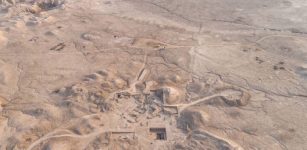 4,500-Year-Old Sumerian Palace Discovered In The Ancient City Of Girsu
Archaeology | Feb 20, 2023
4,500-Year-Old Sumerian Palace Discovered In The Ancient City Of Girsu
Archaeology | Feb 20, 2023 -
 Common Ancestor Of Neanderthals And Humans That Lived 700,000 Years Ago Holds Clues To A DNA Mystery
Archaeology | Feb 22, 2023
Common Ancestor Of Neanderthals And Humans That Lived 700,000 Years Ago Holds Clues To A DNA Mystery
Archaeology | Feb 22, 2023 -
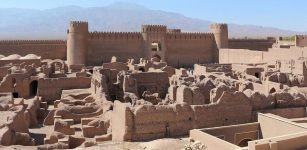 Graves Dated To Achaemenid Or Parthian Empire – Found In Iran
Archaeology | Aug 15, 2018
Graves Dated To Achaemenid Or Parthian Empire – Found In Iran
Archaeology | Aug 15, 2018 -
 2,500-Year-Old Phoenician Shipwreck Being Rescued By Archaeologists
Archaeology | Jul 4, 2023
2,500-Year-Old Phoenician Shipwreck Being Rescued By Archaeologists
Archaeology | Jul 4, 2023 -
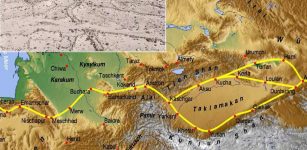 Satellite Images Revealed Lost Ancient Irrigation System In Desert-Like Region Of China
Ancient Technology | Jan 6, 2018
Satellite Images Revealed Lost Ancient Irrigation System In Desert-Like Region Of China
Ancient Technology | Jan 6, 2018 -
 Remarkable Kailashanatha Temple And Unique Passage Of Life Cycle Including Aging, Death And Rebirth
Civilizations | Mar 26, 2017
Remarkable Kailashanatha Temple And Unique Passage Of Life Cycle Including Aging, Death And Rebirth
Civilizations | Mar 26, 2017 -
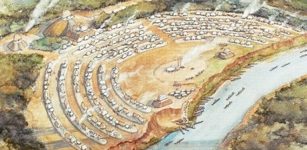 Is The Poverty Point Octagon World’s Largest Ancient Solstice Marker?
Featured Stories | May 21, 2017
Is The Poverty Point Octagon World’s Largest Ancient Solstice Marker?
Featured Stories | May 21, 2017 -
 Similarities And Differences Between Living Spaces Of Neanderthals And Homo Sapiens
Archaeology | Apr 9, 2024
Similarities And Differences Between Living Spaces Of Neanderthals And Homo Sapiens
Archaeology | Apr 9, 2024 -
 ‘Green’ Saudi Arabia Was Home To A 350,000-Year-Old Human Settlement
Archaeology | May 18, 2021
‘Green’ Saudi Arabia Was Home To A 350,000-Year-Old Human Settlement
Archaeology | May 18, 2021 -
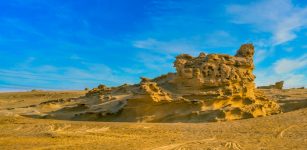 Abu Dhabi Fossil Dunes May Have Inspired The Ancient Great Flood Story – Professor Says
Archaeology | Jul 10, 2022
Abu Dhabi Fossil Dunes May Have Inspired The Ancient Great Flood Story – Professor Says
Archaeology | Jul 10, 2022 -
 Mystery Of Mexico’s Bizarre Mummy May Never Be Solved
Featured Stories | Sep 17, 2024
Mystery Of Mexico’s Bizarre Mummy May Never Be Solved
Featured Stories | Sep 17, 2024

